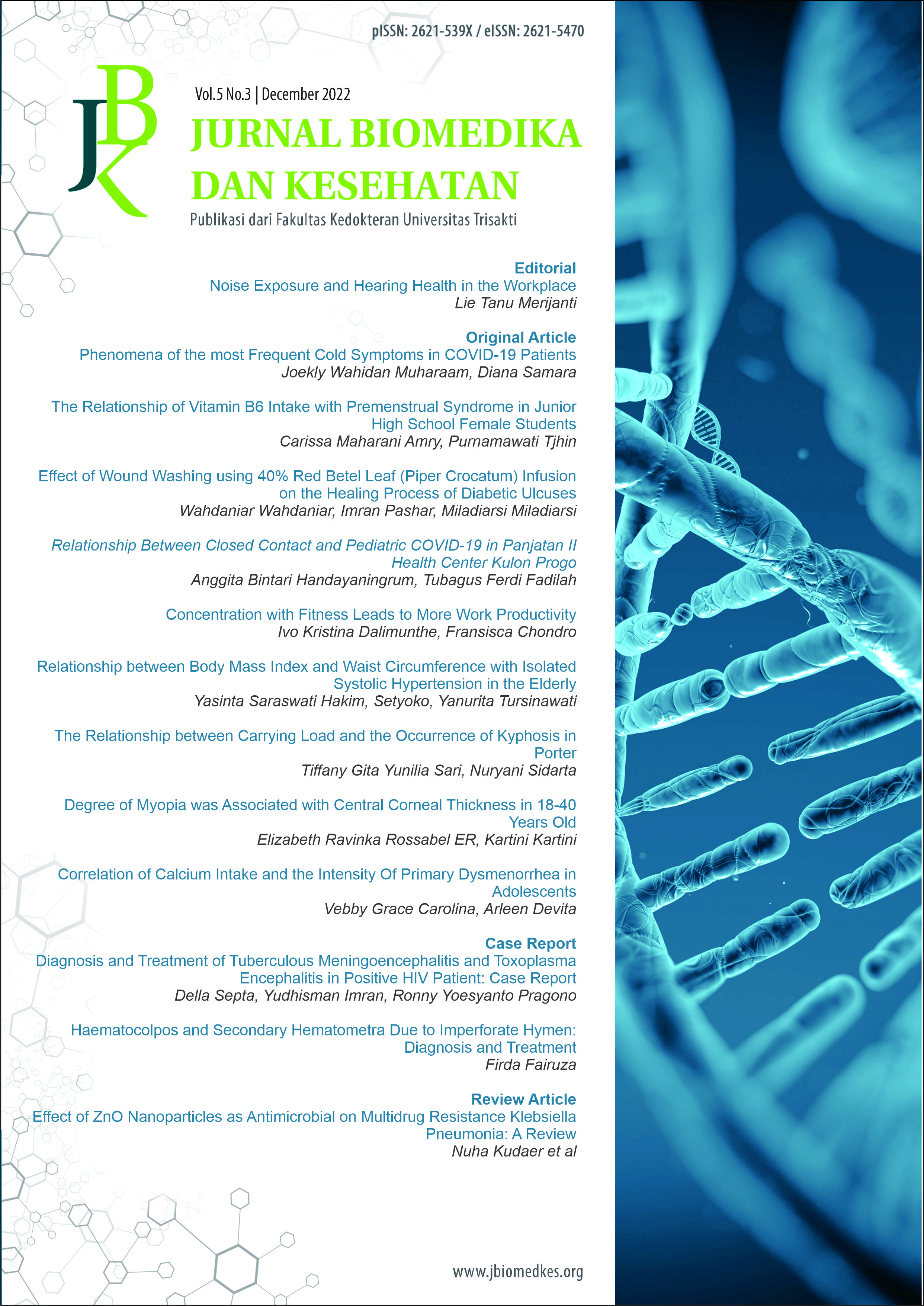Haematocolpos and Secondary Hematometra Due to Imperforate Hymen: Diagnosis and Treatment
DOI:
https://doi.org/10.18051/JBiomedKes.2022.v5.228-235Keywords:
Imperforate hymen, primary amenorrhea, cyclic lower abdominal pain, hematocolpos, hematometraAbstract
Background
Imperforate hymen is an uncommon congenital anomaly of the female genital tract and is rarely
diagnosed in newborns. An imperforate hymen is a cause of primary amenorrhea.
Case Description
A 12-year-old girl was admitted to the pediatric outpatient clinic with cyclic abdominal pain for eight
days. She had lower abdominal pain with dysuria and constipation for the previous six weeks. There
is a bulging mass on the perineal that appears when straining. Fever, nausea, vomitus, abdominal
enlargement, and leucorrhea were denied; breast enlargement since 12 years old with no history of
menarche. The patient vital signs were normal. On physical examination obtained, lower abdominal
pain and tender suprapubic mass were palpable. The pubertal status was normally secondary sexual
characteristics. An interlabial mass was found protruding from the introitus vagina and the hymen
intact on inspection of the external genitalia. Laboratory and urinalyses revealed normal.
Hematometra and hematocolpos were found on abdominal ultrasonography, which led to the
diagnosis of imperforate hymen. Therefore, a hymenectomy was performed and evacuated 520 ml of
dark red blood. The patient’s condition was good, and she had regular menstruation.
Conclusions
Imperforate hymen is an easy diagnosis, but sometimes clinicians are oblivious to including this in the
differential diagnosis of lower abdominal pain in pubescent girls with primary amenorrhea. Also, a
lack of awareness about the importance of external genitalia examination as part of routine physical
examination in children and adolescents makes this diagnosis easily missed or delayed.
Downloads
Downloads
Published
How to Cite
Issue
Section
License
Copyright (c) 2022 Firda Fairuza

This work is licensed under a Creative Commons Attribution-NonCommercial 4.0 International License.
The journal allow the authors to hold the copyright without restrictions and allow the authors to retain publishing rights without restrictions.

